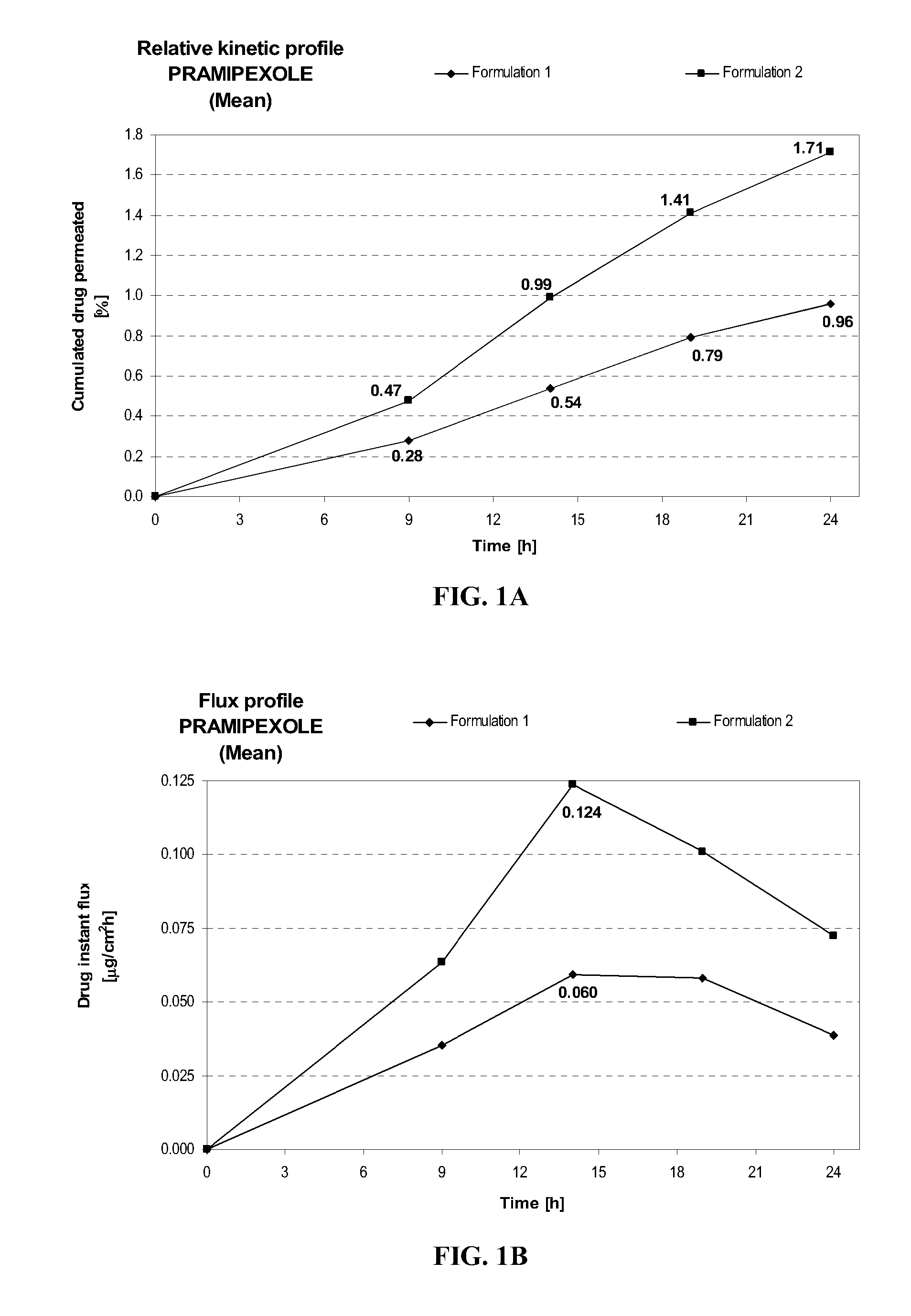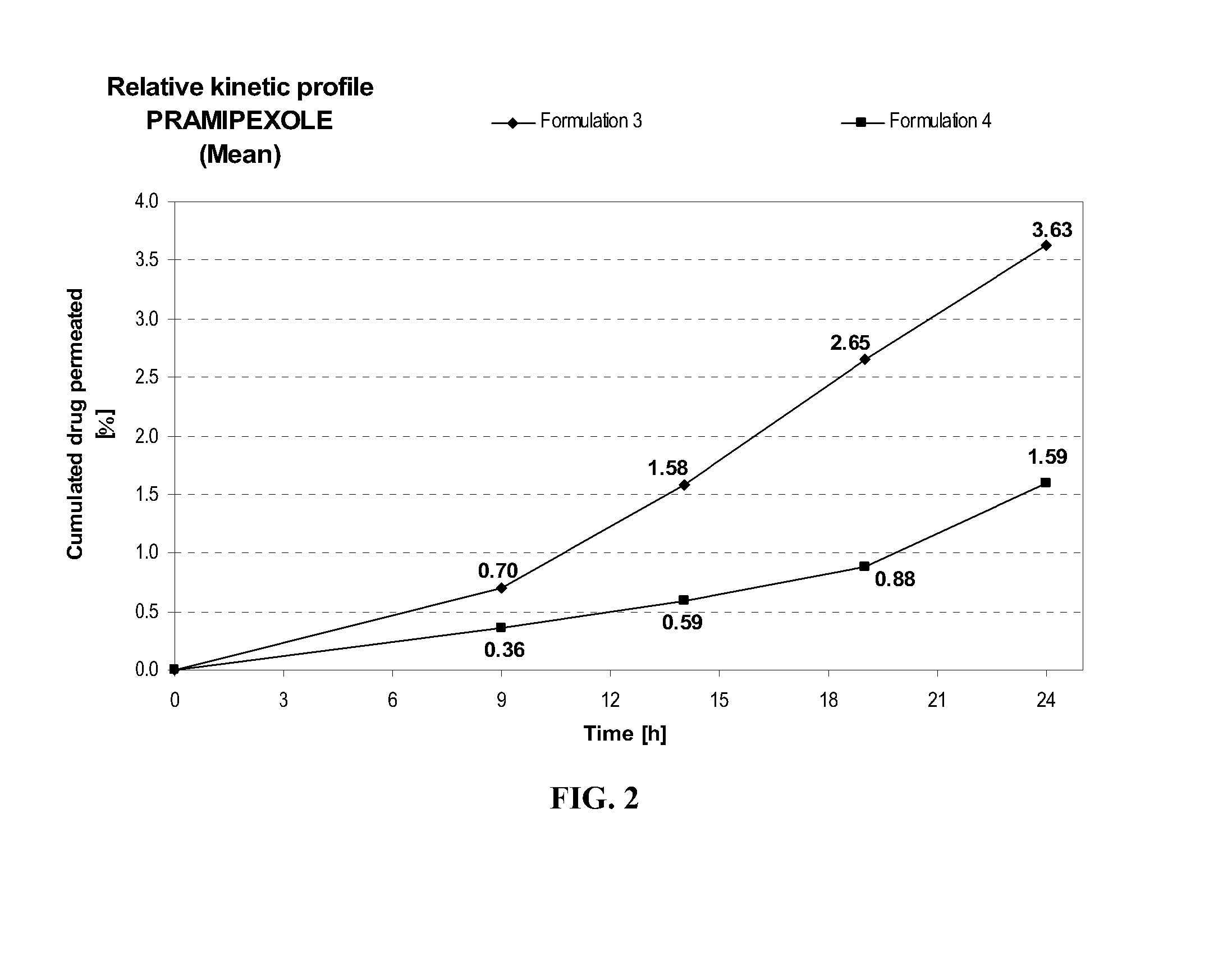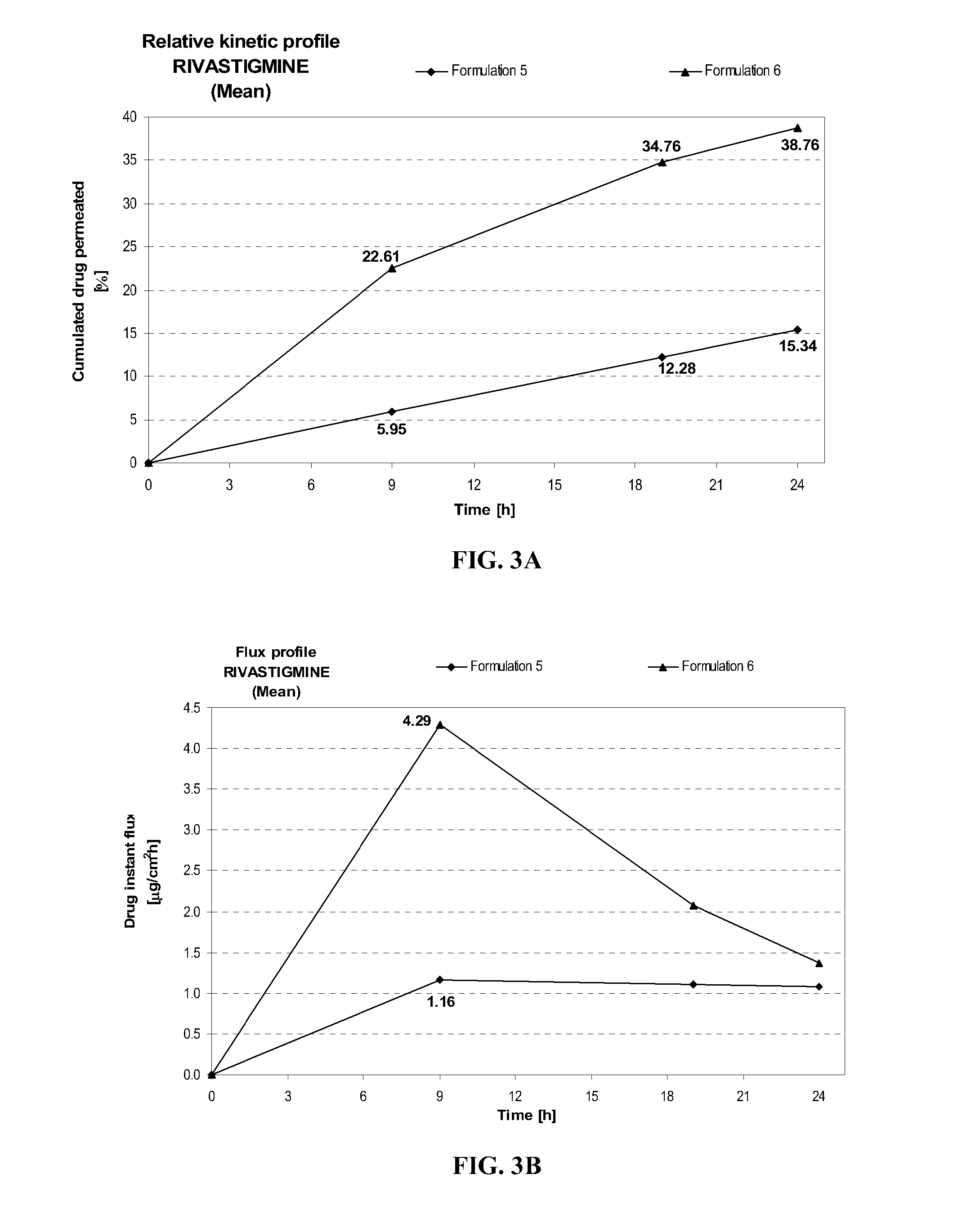Transdermal Delivery Of Systemically Active Central Nervous System Drugs
a central nervous system and drug delivery technology, applied in the field of new transdermal or transmucosal pharmaceutical formulations, can solve the problems of limited amount of drug that can be transported across the skin, low efficiency of drug delivery, and drug destruction on the first pass through the liver, so as to reduce prevent or reduce the effect of preventing or reducing the transfer of active drug(s) to individuals
- Summary
- Abstract
- Description
- Claims
- Application Information
AI Technical Summary
Benefits of technology
Problems solved by technology
Method used
Image
Examples
examples
[0099]In order to further illustrate the present invention and the advantages thereof, the following specific examples are given. It is being understood that the examples herein disclosed are intended only as illustrative and in nowise limitative. Although pramipexole, ropinirole, rivastigmine, fentanyl, selegiline, pergolide, granisetron, and ondansetron are used herein the following examples as drug models illustrating the present invention, it will be appreciated by those skilled in the art that many other CNS drugs can similarly be used.
[0100]All the examples were prepared basically as follows: an alcoholic phase (solution containing the organo-soluble active drugs, the fatty alcohol, diethylene glycol monoethyl ether (Transcutol P), propylene glycol and ethanol, or some of them according to the formulation) was prepared. Water (and hydrosoluble active drugs) was then added and mixed to the organic solution. The thickening agent (carbomer or cellulose) was then added to the hydr...
example a
Transdermal Delivery of an Anti-Parkinson Drug (Pramipexole)
[0114]Formulation 2 delivers after 24 hours at similar pH (8.2+ / −0.1) about 1.8 times more pramipexole than Formulation 1, as shown in FIG. 1A. This comparison shows the importance of the combination of diethylene glycol monoethyl ether and propylene glycol on the transdermal delivery of pramipexole. Similarly, the maximum instant pramipexole flux was about 2.1 times higher for Formulation 2 than for Formulation 1, as shown in FIG. 1B.
FORMULATIONFormulation 1Formulation 2Composition% w / w% w / wPramipexole dihydrochloride2.002.00(as free base equivalent)Diethylene glycol monoethyl ether—5.00Propylene glycol—15.0Hydroxypropylcellulose1.501.50Ethanol, absolute40.040.0Sodium hydroxideqs pH 8.2 + / 0.1qs pH 8.2 + / 0.1Purified waterqs 100.00qs 100.00
example b
Transdermal Delivery of an Anti-Parkinson Drug (Pramipexole)
[0115]Formulation 4 delivers after 24 hours at similar pH (7.7+ / −0.1) about 2.3 times more pramipexole than Formulation 3, as shown in FIG. 2. This comparison shows the importance of further adding a fatty compound such as myristyl alcohol to the combination of diethylene glycol monoethyl ether and propylene glycol on the transdermal delivery of pramipexole.
FORMULATIONFormulation 3Formulation 4Composition% w / w% w / wPramipexole dihydrochloride2.002.00(as free base equivalent)Diethylene glycol monoethyl ether5.005.00Propylene glycol20.020.0Myristyl alcohol—1Hydroxypropylcellulose1.501.50Anti-oxidant0.400.40Ethanol, absolute40.040.0Triethanolamineqs pH 7.7 + / 0.1qs pH 7.7 + / 0.1Purified waterqs 100.00qs 100.00
PUM
| Property | Measurement | Unit |
|---|---|---|
| diffusion area | aaaaa | aaaaa |
| pH | aaaaa | aaaaa |
| weight | aaaaa | aaaaa |
Abstract
Description
Claims
Application Information
 Login to View More
Login to View More - R&D
- Intellectual Property
- Life Sciences
- Materials
- Tech Scout
- Unparalleled Data Quality
- Higher Quality Content
- 60% Fewer Hallucinations
Browse by: Latest US Patents, China's latest patents, Technical Efficacy Thesaurus, Application Domain, Technology Topic, Popular Technical Reports.
© 2025 PatSnap. All rights reserved.Legal|Privacy policy|Modern Slavery Act Transparency Statement|Sitemap|About US| Contact US: help@patsnap.com



